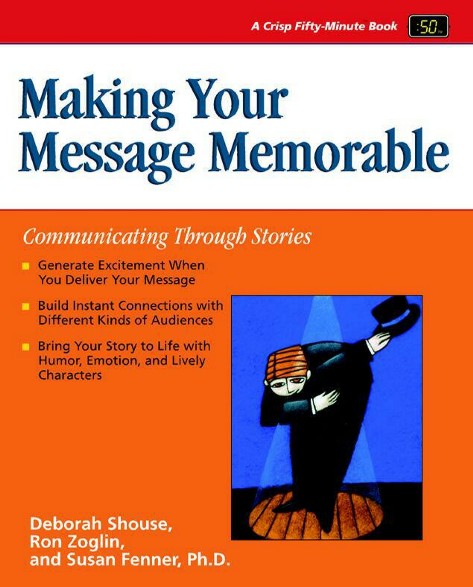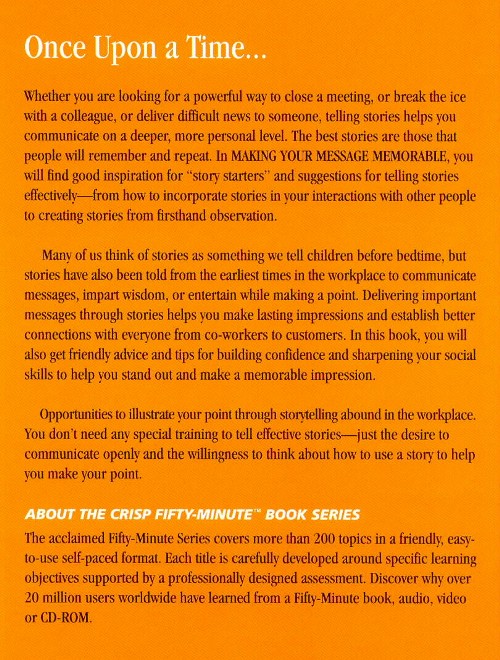|
Contents
Introduction
Part 1 Storytelling in the Workplace
Nine Ways to Put Stories to Work
1. Opening and Closing Meetings
2. Breaking the Ice
3. Showing Vulnerability to Gain Acceptance
4. Sharing Good News
5. Improving Job Skills and Increasing Productivity
6. Delivering Difficult News
7. Selling Products and Services
8. Building Teams
9. Increasing Diversity Awareness
Part 2 Developing Your Story
Defining Your Purpose
Knowing Your Audience
Finding Common Threads Among Audience Members
Understanding the Audience’s Differences
Finding Story Ideas
Connecting with Other People
Reading, Watching TV, and Exploring the Internet
Observing People, Places, Things
Noticing Your Everyday Life Experiences
Sharing Your Mistakes and Successes
Turning to Familiar Stories That Keep Working
Choosing the Story’s Point of View (Hero)
“I” Witness Account: You Are the Hero
Third-Person Heroics: Choosing Another Person’s Story
Using Animals
Telling the Story with Inanimate Objects
Developing Conflict and Resolution
Organizing the Story
In the Beginning
Fill in the Middle
End Game
Summary: Putting It Together and Making It Work
Part 3 Bringing Your Story to Life
Get Started with a Rough Draft
Freewriting for Speedy Results
T-A-P Guidelines for Story Length
Tell or Read the Story Aloud
Seeking the Help of Coaches and Collaborators
Revise and Strengthen the Story
Paint Good Visuals
Make Your Characters Count
Making the Meaning Strong and Universal
Check the Story Against Its Purpose
Create Connections
Lock in Listeners
Add Emotion
Send a Message
Provoke Action
Punch Up the Story with Extra Elements
Sprinkling in Humor
Using Word Play
Developing Dialogue
Summary: The Nine Rs of Refining Stories
Part 4 Connecting with the Audience Through Your Delivery
Creating a Positive First Impression
Finding Your Natural Storytelling Style
Making the Most of Your Voice
Modulation
Accents and Special Voices
Pacing and Pausing
Using Movement and Gestures
Adapting to Setting and Audience Size
Delivering to a Small Group
Delivering to a Large Group
Adding Props, Sound, and Audience Interaction
Summary: Storytelling Is an Art
|

